Load Cases and Load Combinations
If you'd like to follow along, open WebStructural in a
separate tab and take a few minutes to familiarize yourself with the app. We're going to focus
on the button that says "Change design spec...".
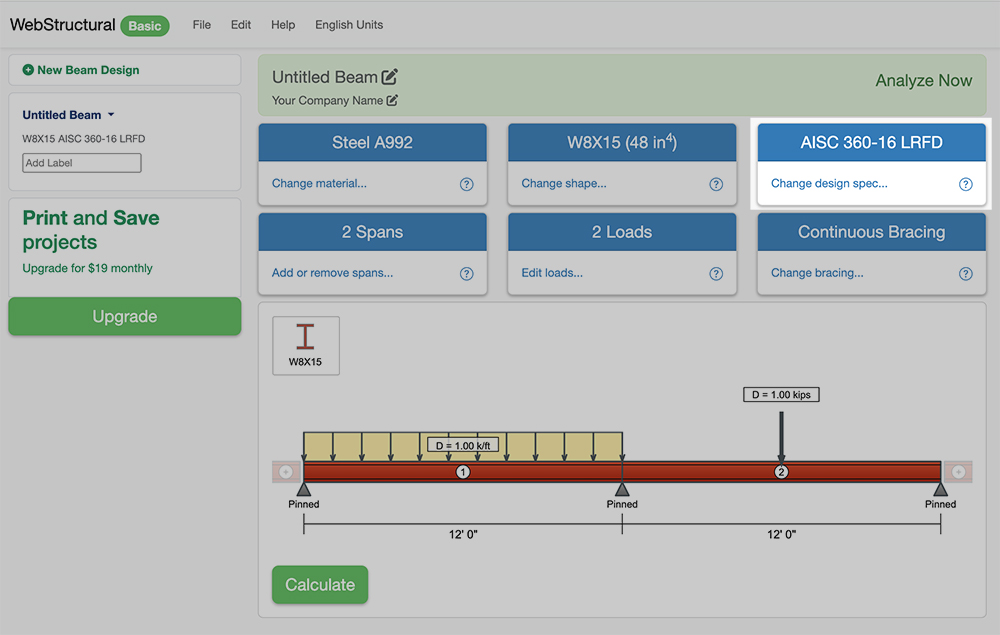
Servicability
In structural engineering, the two main design criteria to consider are serviceability
and capacity. Serviceability refers to the performance of a structure under load as perceived by its occupants.
Due to the elastic nature of steel and wood, elements that are meeting loading demands can still
feel uncomfortable if they deflect too much under live loads. Furthermore, floors and
roofs must limit deflection in order to be safely serviced. Typically,
serviceability is maintained by ensuring structural elements remain within a deflection limit.
In WebStructural's Beam Designer module, these limits can be specified from the Design Specification
button.
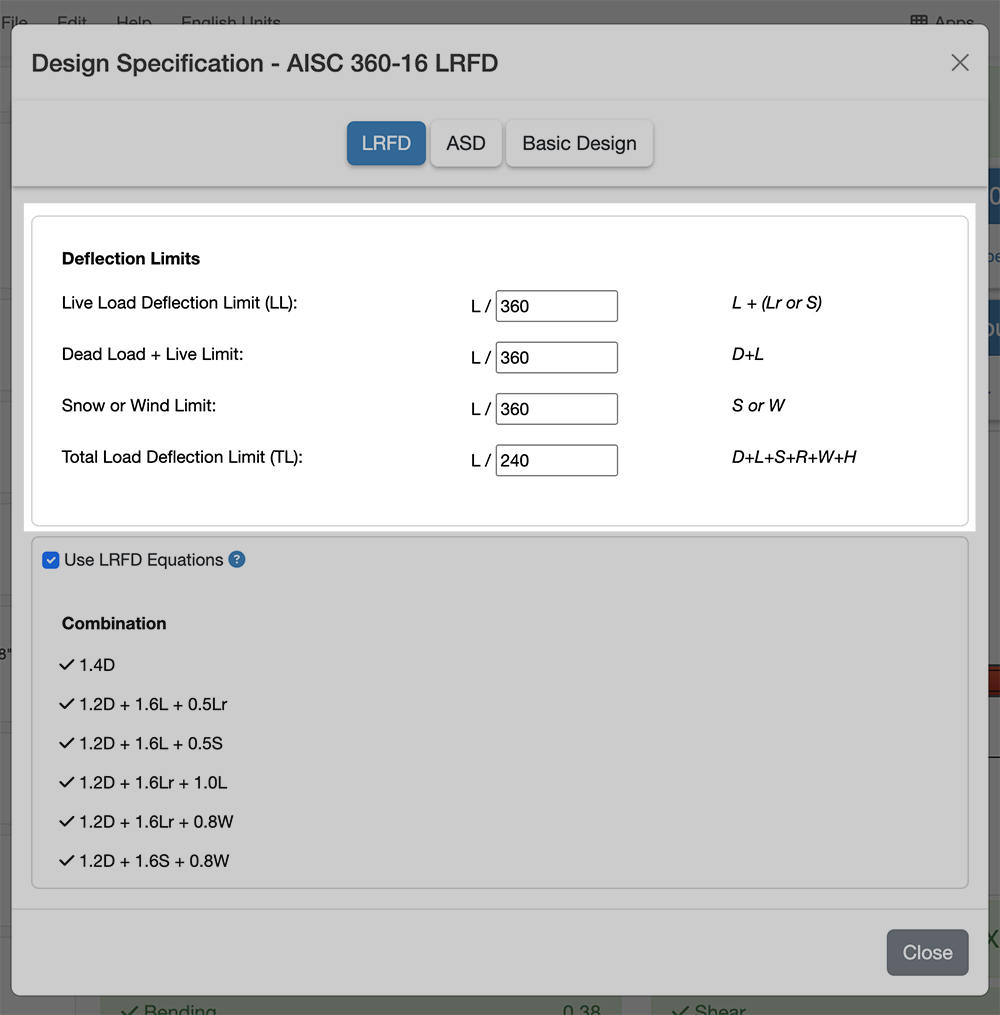
Capacity
Capacity, as the name implies, refers to the structural element's ability to meet the loading
demands it is expected to experience over its lifetime. While serviceability is based on human
perception and general structural behavior, capacity calculations ensure structural elements
remain in the elastic range to avoid catastrophic failure. All design specifications include
some type of safety factor to modify capacity and demand, ensuring that beams and columns
remain well within their elastic limits. These safety factors are built into the loads applied
to the structure via Load Combinations (LRFD and ASD). Safety factors are also included in the
design specifications used to determine capacity (AISC and NDS). In this article, we'll focus
on Load Combinations. Specifically, Load Resistance Factor Design (LRFD) and Allowable Strength
Design (ASD). In WebStructural, load combinations can be specified from the Design Specification
button.
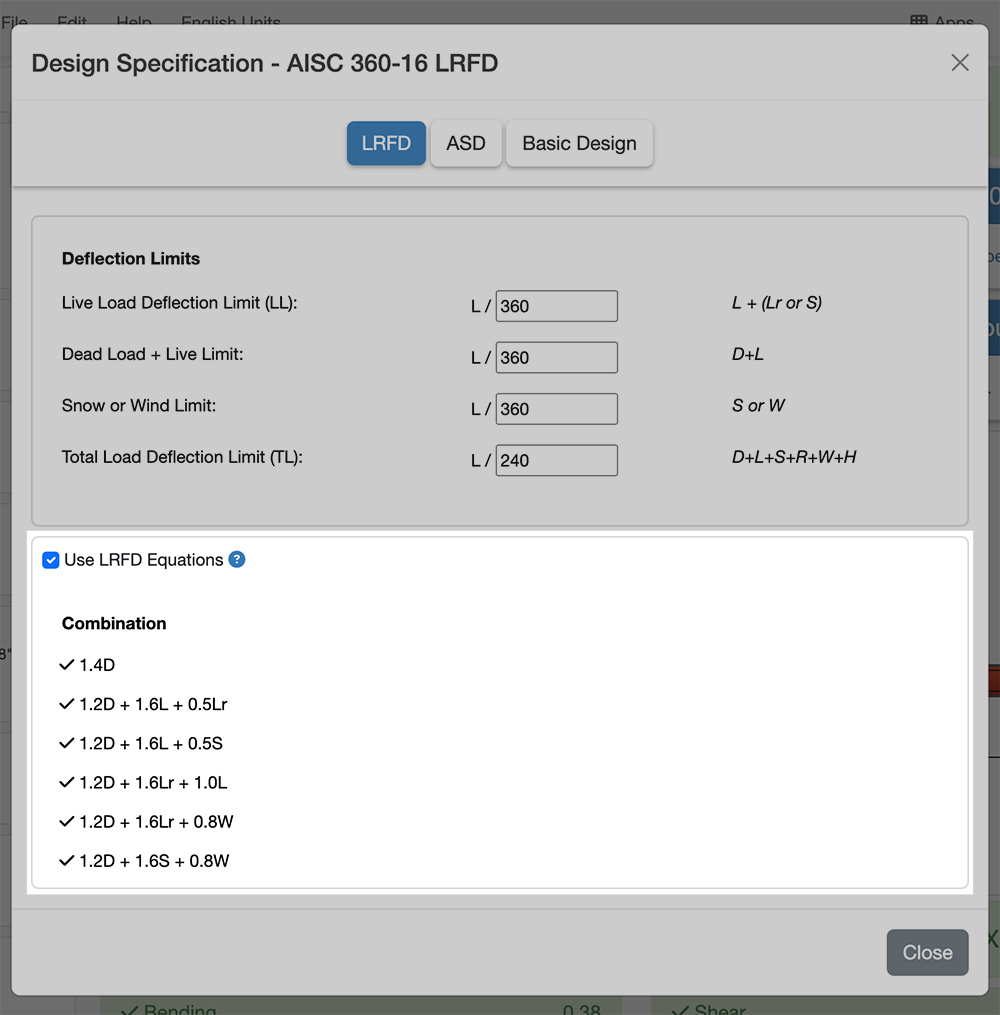
Load Cases
LRFD and ASD share the concept of Load Cases. Load Cases are a way to break loads up based on
their type, allowing loads to be combined in different ways to simulate different interactions.
These combinations, called Load Combinations, account for extreme events, the maximum load a
member is likely to experience over its lifetime. It is important to remember that this is not
the only place safety factors are applied. Safety factors are also applied to capacity checks
to further ensure that even in extreme conditions, structural elements remain within the
elastic limit.
| D | Dead Loads |
| L | Live Loads |
| Lr | Live Roof Loads |
| S | Snow Loads |
| W | Pressure due to wind |
| E | Overburden pressure due to fill (rock, dirt, etc) |
| H | Lateral pressure due to water or dirt typically pressing on the sides of a structure |
| R | Roof Loads |
LRFD vs ASD
So what's the difference between LRFD and ASD? In its simplest form, LRFD focuses on increasing
load, accounting for uncertainty in dynamic loads like wind and snow. ASD, on the other hand,
focuses on reducing load (and capacity) based on the probability of multiple load cases acting
together at exactly the same time. WebStructural's Beam Designer module supports a comprehensive
set of combinations for both LRFD and ASD.
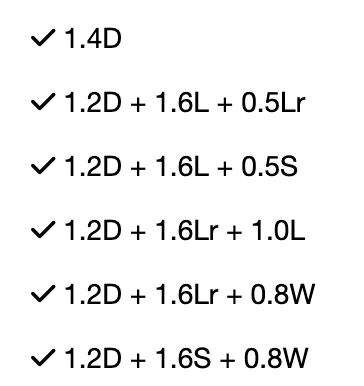
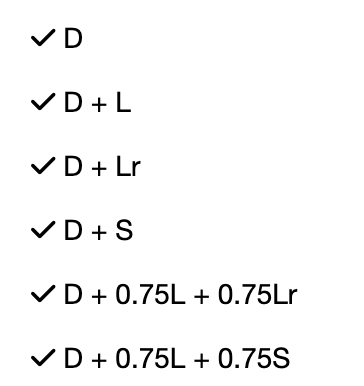
A final important piece to all of this is understanding how each method adjusts capacity. The key
difference becomes clear when we look at the controlling equations for each method:
LRFD
Mu ≤ φ × Mn
Where φ is a resistance factor specific to the material and stress
state (bending, shear or normal).
ASD
Mu ≤ Mn / Ω
Where Ω is a global factor of safety.
Conclusion
So is one method better than the other? The short answer is no. For structures that experience more
variable and dynamic loads, LRFD will typically result in a more conservative design. Conversely,
if loads are less dynamic and predictable, ASD can result in a more conservative design. Both are
still acceptable methods according to IBC. At WebStructural we've found that LRFD seems to be the
more preferred method. That said, it's ultimately up to you, the engineer or designer, to decide
which is best for your use case.
Ready to design your next steel or wood beam in minutes?
Try WebStructural NowWe want to hear from you. Please let us know if you have any suggestions or requests.